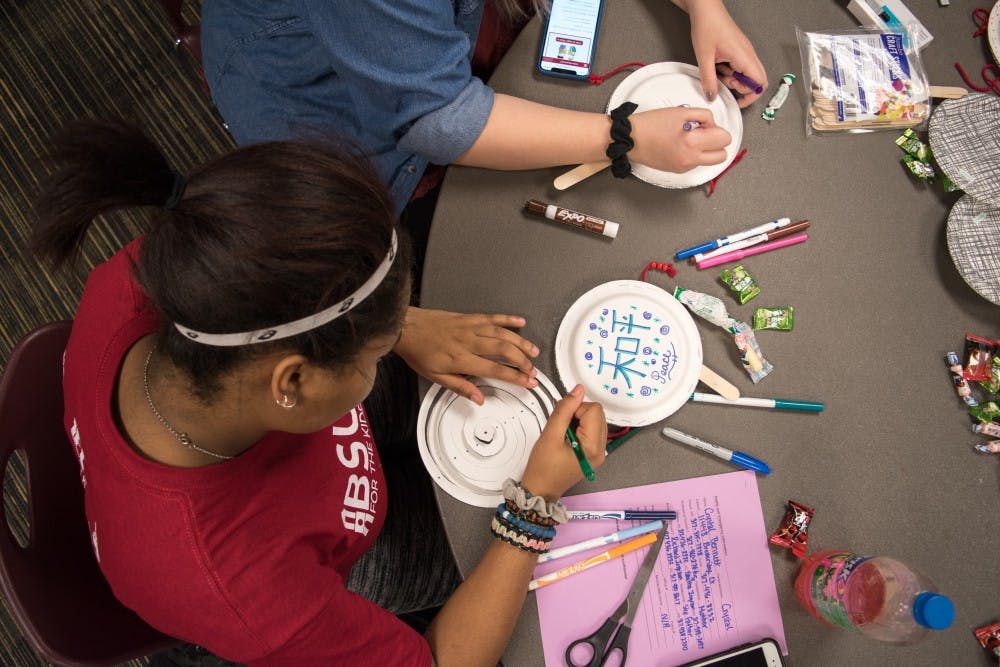While some rang in the New Year at midnight on Dec. 31 by watching the ball drop in Times Square, the Asian American Student Association, AASA, brought the cultural celebration of the Lunar New Year to campus on Monday.
The Lunar New Year, also known as the Chinese New Year, is a two-week long holiday celebrated across Asia that focuses on family, luck, love, wealth, food, fortune and the new year.
“The Lunar New Year is one of the bigger celebrations because of all the planning and celebration that goes into it,” said Isabella Gandy, a junior nursing major. “It’s big for my family. We send each other messages and red envelopes.”
In Chinese culture, each year is represented by a zodiac animal based on the lunar calendar. This year is the year of the dog, which means it’s a year of good luck for those born in 1958, 1970, 1982, 1994 and 2006.
Vibrant parades, firecrackers, dances, paper lanterns, intricate dragon costumes and honoring ancestors with incense are only a few traditions for the event.
“The purpose is to welcome in the new year,” Gandy said. “Many of the traditions that go along with it like wearing red, giving out envelopes full of money and the parades are for good luck.
“People who are superstitious will rigorously apply these traditions so they will have good fortune in the new year. The celebration and the handing out money for me is making sure we care about our family even though we’re far away from each other.”
On Monday, the AASA welcomed Asian Americans and others eager to learn about Asian culture to their celebration of the Lunar New Year.
“There’s a lot of international students like Chinese Americans and Vietnamese Americans,” Gandy said. “[Celebrating cultural events] is paying respect to their culture because we don’t have days off of school or anything.”
The organization decorated room 301 in the Student Center with gold ornaments, red tassels, red paper lanterns, a handmade dragon head and Asian candies for the event and guests were able to color paper drums, practice writing Chinese characters and discuss their plans for the year of the dog.
“I most look forward to the food,” Gandy said. “For Chinese [people], there’s a lot of meat and vegetable-filled dumplings and it’s family style. There’s huge trays of handmade dumplings. It’s something I enjoy making with my grandma.”
The organization meets at 6:30 p.m. every Monday in room 301 of the Student Center to discuss new topics related to Asian culture, whether it be sports, language or traditions. At each meeting, there are always hands-on activities for members to practice and apply what they learn.
“Ball State’s Asian American community isn’t very big,” said Huy Huynh, a senior psychology major and president of the AASA. “So this is the only place where our community can come together and actually be who we are, and not worry about either being too Asian, or being too American in front of some of the international students.”
Contact Melissa Kraman with comments at mmkraman@bsu.edu or on Twitter @missy_kraman.





